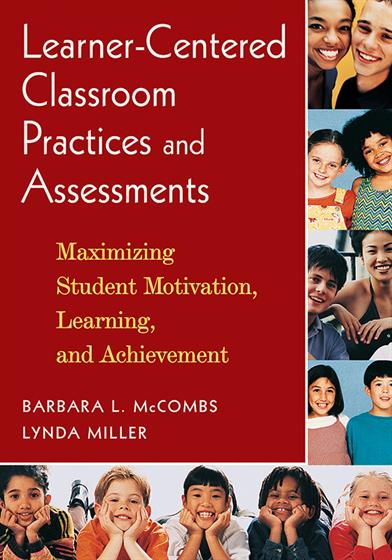Preface
Acknowledgments
About the Authors
1. What We Know About Learning
How Do You Learn Best?
What Does the Evidence Show About Supporting Natural Learning?
Teachers and Students as Co-Learners: An Invitation
What’s Next?
2. What Is Learner Centered From an Evidence-Based Perspective?
What Does “Learner Centered” Mean?
Seeing the Big Picture: Education as a Complex Living System
Domains of Schools as Living Systems
The Learner-Centered Model
What Are the Learner-Centered Principles?
Factors Affecting Learners and Learning
What’s Next?
3. What Teachers and Students Tell Us About Learner-Centered Practices
What Teachers Have Recognized About the LCPs
Translating the LCPs Into Practice
The LCPs, Testing, and Accountability
What Do the LCPs Mean for Teaching and Learning?
What the Evidence Shows: Characteristics of Effective Teachers
What Students Say
Strategies for Honoring Student Voice
Forming a Student Union
Involving Students in Action Research Projects
Students as Meaningful Partners: International Evidence
Reflection
What’s Next?
4. The Learner-Centered Principles: One By One
Domain 1: Cognitive and Metacognitive Factors
LCP 1: Nature of the Learning Process
LCP 2: Goals of the Learning Process
LCP 3: Construction of Knowledge
LCP 4: Strategic Thinking
LCP 5: Thinking About Thinking
LCP 6: Context of Learning
Domain 2: Motivational and Affective Factors
LCP 7: Motivational and Emotional Influences on Learning
LCP 8: Intrinsic Motivation to Learn
LCP 9: Effects of Motivation on Effort
Domain 3: Developmental and Social Factors
LCP 10: Developmental Influence on Learning
LCP 11: Social Influences on Learning
Domain 4: Individual Differences Factors
LCP 12: Individual Differences in Learning
LCP 13: Learning and Diversity
LCP 14: Standards and Assessment
Finding Examples of LCPs in Your Own Practices
What’s Next?
5. Learner-Centered Practices
Turning Principles Into Practices
Glasser’s Six Conditions for Quality Schoolwork
Classroom Climate
Relevance of Learner-Centered Practices in the Context of Standards and Assessment
The Achievement Gap Issue
What Students Say About the Achievement Gap
Reflection
What’s Next?
6. Effective Learner-Centered Practices
Effective Learner-Centered Practices for Students in K–3
Effective Learner-Centered Practices for Students in Grades 4–12
What Happened to “Classroom Management”?
Strategies for Creating Learner-Centered, Resilient Classrooms
Insights and Reflections: What Needs to Change in My Classroom?
What's Next?
7. What Tools Do I Need to Become Learner Centered?
Who’s in Charge of My Learning?
Who’s in Charge of Students’ Learning?
Implications for Practice
Implications for Policy
The Learner-Centered Surveys
Characteristics of Learner-Centered Tools
The Assessment of Learner-Centered Practices (ALCP):Tools for Creating Learner-Centered Classrooms and Departments
Research-Validated Definition of “Learner Centered”
ALCP Feedback Process for Teachers
Understanding Sample ALCP Feedback: Table of Teacher Variables Compared to the Learner-Centered Rubric for One Teacher
Becoming a Magnet for Change in My School and District
Reassessing My Beliefs
What Is My Vision for Schools?
My Plan for a Learner-Centered Classroom
How Can I Manage Resistance to Change?
Obtaining the Necessary Support for Learner-Centered Schools
Where Do I Go From Here?
Resource A: Teacher Strategy Ideas
Resource B: Contacts: Learner-Centered Projects and Schools
Resource C: Books and Journals Worth a Read
Resource D:Learner-Centered Glossary: Some Definitions
References
Index




